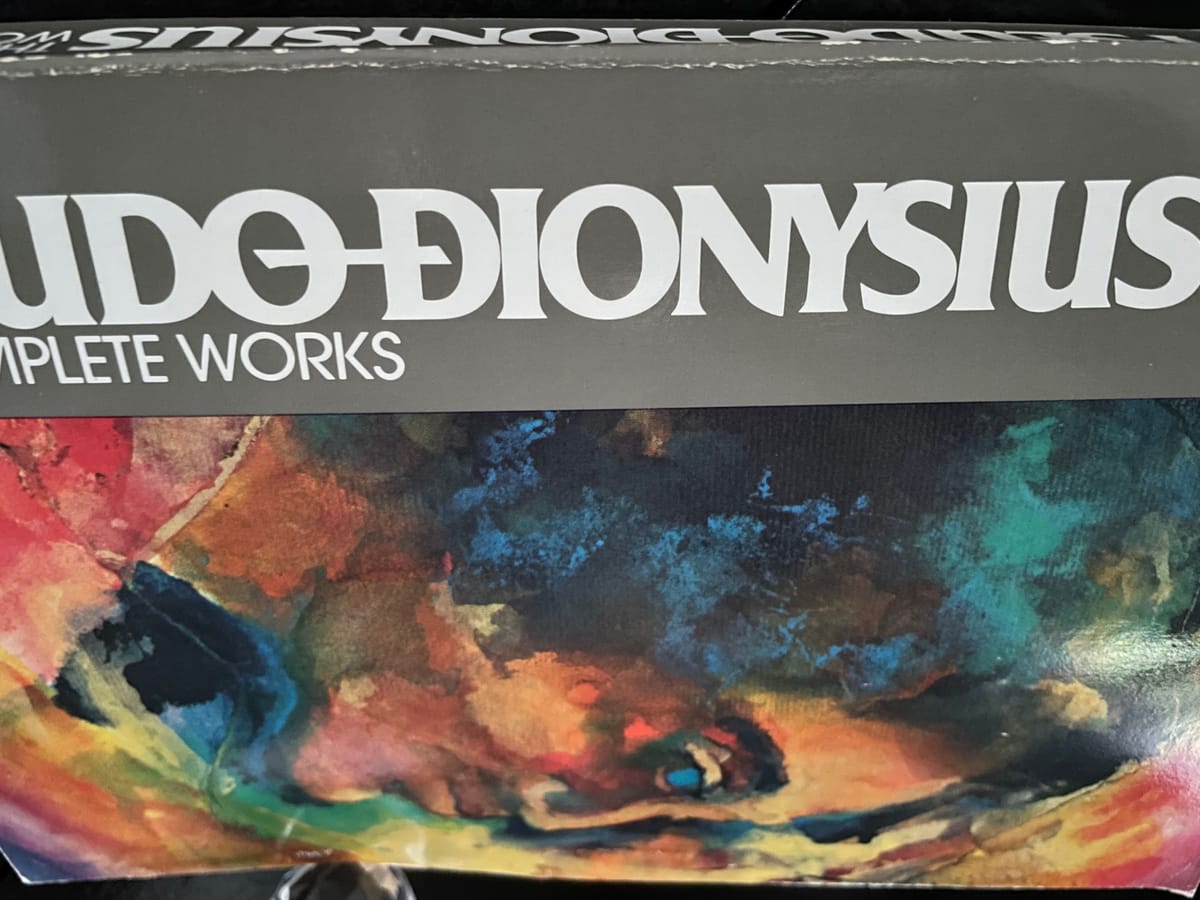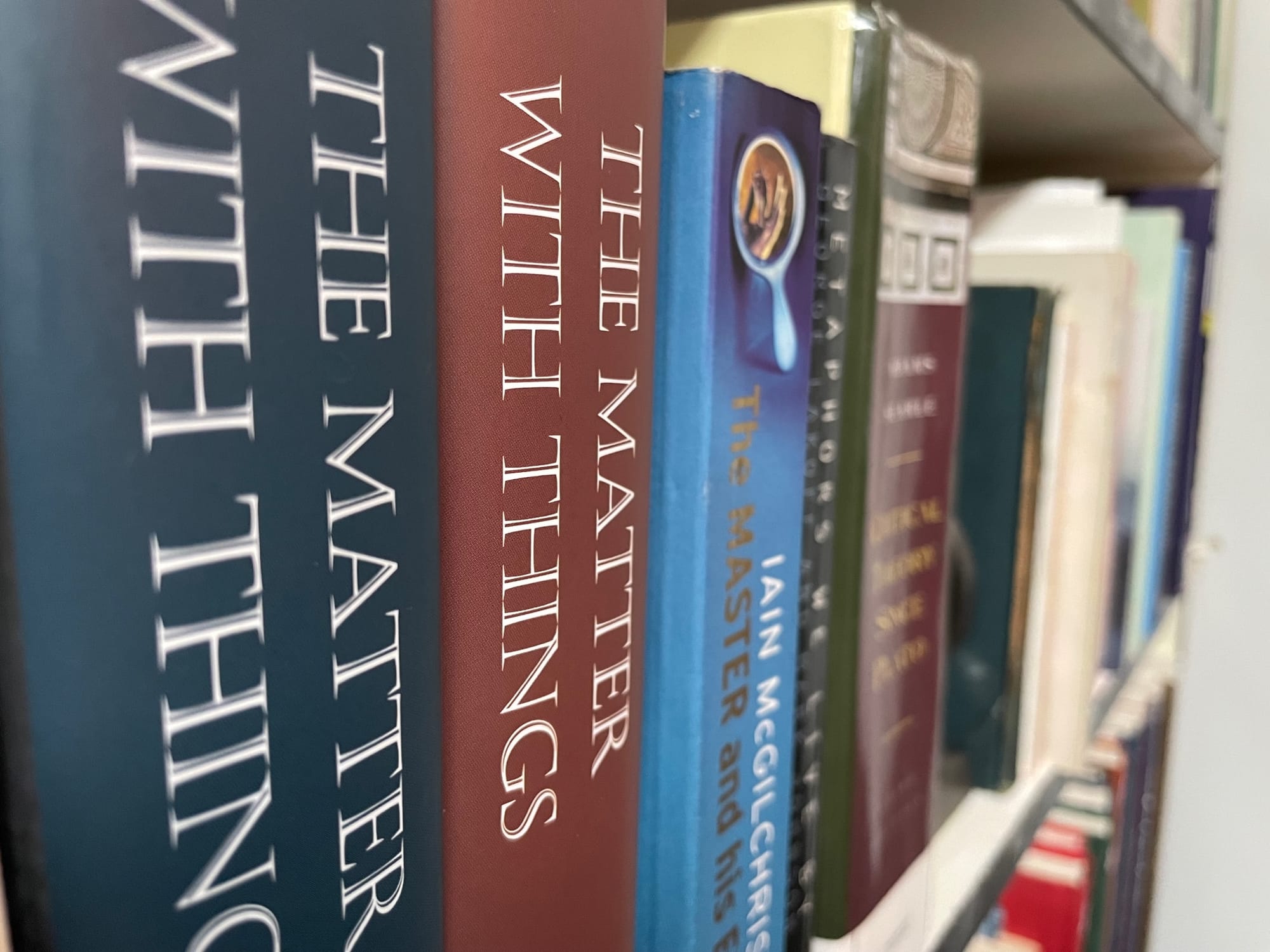The Pseudo-Dionysius and the Tao
The Satoshi Nakamoto of Mysticism. This dude first articulated the western mystical tradition. Like the inventor of Bitcoin, we don’t even know who he was. But he pointed to the Tao.

If you read Chapter 17 of the Book of Acts in the Bible, you’ll see an odd reference at the end. It says that many people converted to Christianity, including Dionysius the Areopagite.
The writer just throws it out there, as if everyone knows him. “Ah, yeah. Great guy, that Areopagite. Saved a bunch of folks from destruction in 70 AD. Great friends with Emperor Titus and gave a speech at the unveiling of his arch.”
Everyone knows that dude.
But the thing is, nobody knows that dude. At best, legendary history surrounds the guy. He was supposedly zealous for the faith and became the first bishop of Athens. Later accounts said he was the first bishop of Paris.
He’s perhaps best known because of a strange person who called himself “Dionysius the Areopagite” even though he most definitely wasn’t him, unless the original Dionysius lived to be 500 years old.
We don’t know when this “Pseudo-Dionysius” wrote, but we know it was sometime before 532 (the year when someone else first referenced his works), and we’re reasonably certain it was sometime after 400. We don’t know his gender, much less his reason for using a pseudonym that tricked people for hundreds of years into thinking s/he was the same Dionysius referenced in Chapter 17.
But even though this strange writer adopted a sham name, he wrote solid, pioneering, works in mysticism, like The Celestial Hierarchy and The Divine Names. They’re opaque books: hard to penetrate, with dense prose packed with spiritual meaning.
But the books became hugely influential in the Middle Ages. Thomas Aquinas quoted him at least 1,700 times.
We Can Only Define What God Isn’t
So, what did the Pseudo-Dionysius write about?
Well, a lot of things, but he’s probably best known for developing “apophatic” theology. Instead of thinking and talking about what God is, Pseudo-Dionysius focused on what God isn’t. God is, after all, the ineffable: when humans meet Him, they cease to see, whether it’s Moses hiding his face in front of the burning bush or God blinding Paul with a blinding light on the road to Damascus or a mystic emerging from a trance. We can’t, the mystics knew, even see God, much less describe him.
When we attempt to say what God is, we fail.
That’s what Pseudo-Dionysius articulated, as it were.
The Pseudo-Lao Tzu
A continuing theme in this column is the Tao, or what Aquinas may have called the “Act of Existence,” or what Huxley was probably referring to when he talked about seeing to the other side of the door of perception, or what I refer to as the left side of the Reality Spectrum.
The main gist of these columns: There is an element of reality, of existence, that transcends—stands beyond, defies—language and logic. That element is known as “the Tao,” which was the “subject,” as it were, of Lao-Tzu’s Tao The Ching.
The first line of the Tao Teh Ching tells us that “The Tao that can be put into words is not the real Tao.” Taoism later merged with Mahayana Buddhism to give us Zen. When someone asked the Zen master Wen-yu to state the First Principle of Zen, he echoed that first line from the Tao Teh Ching: “If words could tell you, it would become the Second Principle.”
I think Pseudo-Dionysius would agree, as would the legions of Christian mystics who have followed in his trail over the past 1,500 years.
God, the mystics tell us, transcends—stands beyond, defies—language and logic. Therefore, it’s impossible to describe Him.
But we can describe what He isn’t. In fact, by definition, if we can’t describe Him, we must be able to describe what He isn’t, unless we can’t describe anything at all (which is a viable philosophical position, incidentally, but it just points back to the Tao, as explored here).
God transcends the right two-thirds of the Reality Spectrum and, therefore, transcends the properties of those parts of the Reality Spectrum: language, logic, linearity.
Modern man is obsessed with calculations and proofs, but I’m afraid the Tao defies such things. Hopefully, all of the examples I’ve been providing (here, here, here, and here) offer enough evidence that the Tao “is a thing.”
These columns are now going to move on and explore the essence of modernity: the rejection of the Tao. I’ll end this series of columns with a quote from last week’s column:
The left side of the Reality Spectrum, says the modern man, isn’t prior to the right sides. In fact, the left side doesn’t even exist. All is essence, accident, being, and substance. Things we can define; things we can touch; things we can reach with logic and reason; things we can classify and control; things we can use; things we can act upon . . . things that work and allow us to carry out deeds . . .

